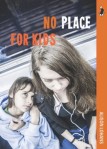Grade 9 curriculum contexts (pp. 278, 285-286 in the curriculum guide)
PERSONAL AND PHILOSOPHICAL
In this context, students are looking inward and focusing on self-image and self-esteem. They reflect on self and life, on their beliefs and values and those of society.
SOCIAL, CULTURAL, AND HISTORICAL
In this context, students look outward and examine their relationships with others, their community, and that of the world. They also can consider the historical context.
ALL THAT I AM – THE SEARCH FOR SELF (personal & philosophical) – Ken’s sense of identity, and his faith in himself based upon his many skills and positive attributes, is shaken badly as the result of intensified racial prejudice and his government’s extreme actions against loyal citizens of Japanese ancestry: Ken does not self-identify as “Japanese”, and because of this unjust treatment, loses his sense of self-worth. The evacuation and time spent in the relocation camp force him to reconstruct his sense of self. Paula, in contrast, sees herself in a negative manner, and beginning to develop along the same lines as her frustrated, under-educated mother. Taking a more clear-eyed look at who she is vis-à-vis her family, with a variety of possible role models (both positive and negative), the injustices enacted by the U.S. government, and the added responsibilities of caring for two farms, work in a catalytic way to galvanize Paula into stepping beyond the traditional family boundaries in terms of women’s roles.
CONFLICTS, ISSUES, AND CHOICES – DOING THE RIGHT THING (social, cultural & historical) – War-time hysteria and racial prejudice cause many normally-reasonable people to make drastic choices that are extremely unreasonable. Both Paula and Ken are challenged to do what they can to work through conflict, and to right the wrongs they see being perpetrated around them – Paula by taking a more clear-eyed look at her traditional family roles, and Ken by learning to embrace the part of him that is Japanese, and use it as a means of problem-solving.
EXPLORING LOYALTY, LOVE, AND RELATIONSHIPS (personal & philosophical; social, cultural & historical) – Ken’s and Paula’s deep, life-long friendship puts them in an ambiguous situation (in their time, to begin dating would be unthinkable). In this context, their loyalty to one another, and to their families, is tested in a number of ways. Additionally, Ken’s unswerving loyalty to his country is seriously tested.
SURVIVING AND CONQUERING (social, cultural & historical; personal & philosophical; environmental & technological) – Ken, and all of those exiled around him, must learn to survive with dignity and build community, in spite of the inhumane treatment at the hands of their government; this necessity of survival also forces Ken to take a hard look at his own dreams, versus the greater good. Paula, in her quest to stand up for what is right, must learn to survive the taunts of her racist peers, the demands of a very heavy work load, and to persevere academically in order to be able to go to college to become a teacher, in hopes that she will someday be able to help make a difference.








